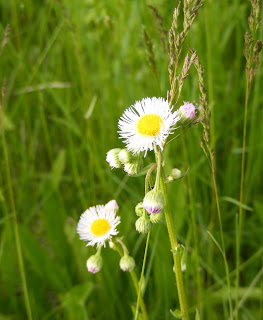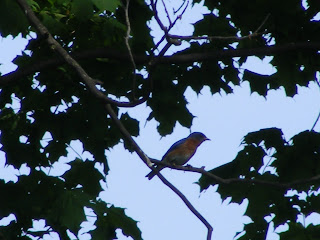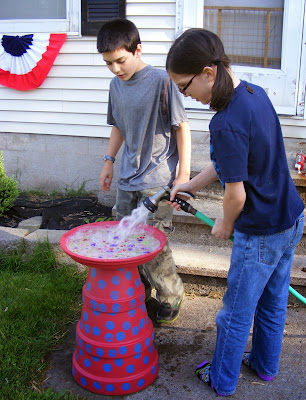We headed out to the Great Swamp Conservancy this past week....It's very close to the house and we were hoping to see nesting Osprey.
We have been studying birds and John James Audubon. The kids were very excited when they saw this sign, declaring the swamp an "important bird area" by the National Audubon Society!
There are bald eagles making a great comeback in this area.
We didn't see any bald eagles on this trip, but just last week we spotted one at Grandma and Grandpa's house.
True Forget-Me Not
A very diverse area...it has native wildflowers, many bird varieties and the largest Great Blue Heron rookery in Central New York.
Red-wings blackbird and a cattail
It always has open fields, ponds, and a boardwalk leading into a flooded wood.
common fleabane
Great Blue Heron ---an awesome sight!
Our first ever sighting of an Orchard Oriole. The kids first spotting its hanging nest...and then we chased this bird and what we thought was a robin around the trails, trying to get a good photo.
After getting this photo we can home and searched our bird books....we are almost positive it is a pair of orchard orioles.
Larger--or Slender Blueflag
The kids decided it was the track of a pterodactly....I decided it is the track of a wild turkey.
A very cute raccoon track
We also saw a flycatcher....I have know idea what kind...they confuse me!
New York's state bird...the Eastern Bluebird
We are also for the bugs...Mark spotted this fishfly...we identified it by its feathery antennae
A nesting Great Blue Heron
Luke found this Goldenrod Spider...it was the first time for this spider...how awesome!
Kim on the lookout!
We saw many, many tree swallows...they have totally overtaken all bluebird houses
We saw, but didn't get pictures of, cardinals, wrens, robins, mallard ducks, Canadian geese, and an allusive Bobwhite Quail we chased all over the trails to identify. (In the quest for an osprey nest, we discovered that there are no nesting pairs of Osprey at the Great Swamp Conservancy.)
We can't wait to visit again soon.
You can check out the Conservancy's current newsletter, Marshlander, here.
























































